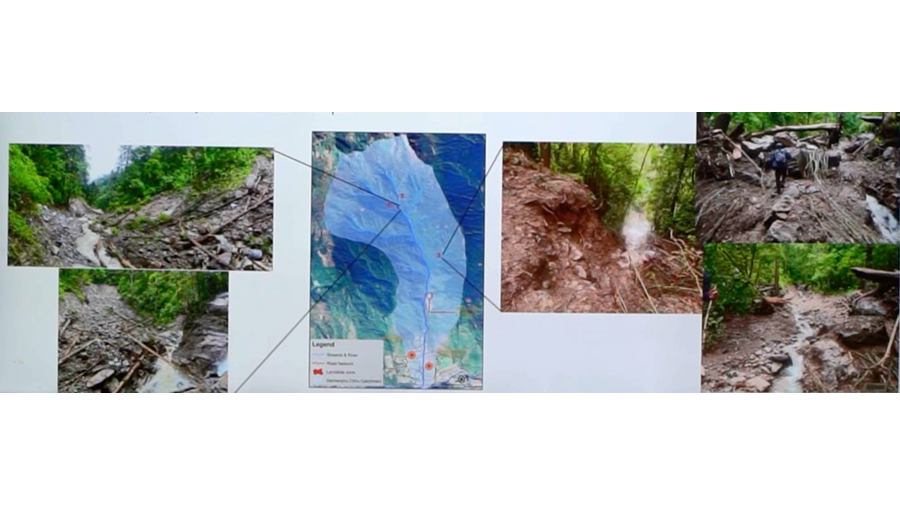
Heavy rainfall due to a convective thunderstorm which triggered landslides upstream is pointed out as a possible cause of Saturday’s Dechencholing flood. This is according to the findings of the National Centre for Hydrology and Meteorology, NCHM and the Department of Geology and Mines. On Tuesday, two technical teams visited the watershed along the stream. Their findings were shared during a media briefing this afternoon.
To determine the cause of the flood that wreaked havoc at Dechencholing on Saturday, technical teams comprising seven experts visited the watershed along the stream.
The experts also analysed Saturday’s satellite images and weather. A sudden heavy rainfall with thunder was caused by a convective storm according to the analysis.
The NCHM says that this phenomenon usually occurs during this time of the year.
Thunderstorms are tall cloud formations that are accompanied by heavy rainfall, sometimes strong winds and also hailstones.
Dechen Lhamo Gyeltshen, a meteorology officer at NCHM said “In this case, we specify convective thunderstorms specifically because sometimes thunderstorms are caused by large-scale systems such as cyclones, which are a little bit predictable. However, this time it was caused by a convection. Convection is just a term for strong heating during the day from the sun and when this happens air rises, condenses and forms these thunder clouds which cause the thunderstorms.”
She added that these thunderstorms are very tall clouds with a lot of moisture content causing heavy rainfall within a short period.
The team’s findings revealed that this is what happened before the flood occurred.
Furthermore, the findings highlighted that high-intensity heavy rainfall on the day saturated soils and triggered landslides causing the flash flood.
One of the geologists from the technical teams said that an artificial lake would have been formed by landslides.
Rinzin Wangmo, a geologist at the Department of Geology and Mines said “we went to the first river confluence and we found out that on the right stream, there was an active landslide which might have been caused by the stream cutting and this active landslide still had loose material like the trees and the soil and the rocks and this might have been eroded towards the river pathway and might have constructed its pathway and caused the artificial lake.”
She added that heavy rainfall could have further triggered the situation.
“With the higher precipitation which might have taken place there, the (artificial) lake might have burst out and not only that while we were traversing along the river banks, we have again seen several landslides which have been caused by the tool scoring such that it has created many overhanging banks which extends up to five to six meters and those materials are still coming down, further constricting the stream path.”
According to the findings, the Dechencholing stream has numerous tributaries from both sides contributing to the flow of the mainstream. However, the technical teams concluded that there is no lake upstream based on Google and other aerial images.
The catchment has good forest cover. Hence, it was not possible to assess the situation with a drone.
Meanwhile, the NCHM is surveying the area to install a manual early warning system with a siren as recommended by the technical teams.
One of the technical teams recommended installing a monitoring system for the stream. Moreover, officials also pointed out the need to integrate the lessons learned from the current weather event in future developmental activities as experts warn of similar situations in the future.
Devika Pradhan
Edited by Kipchu









